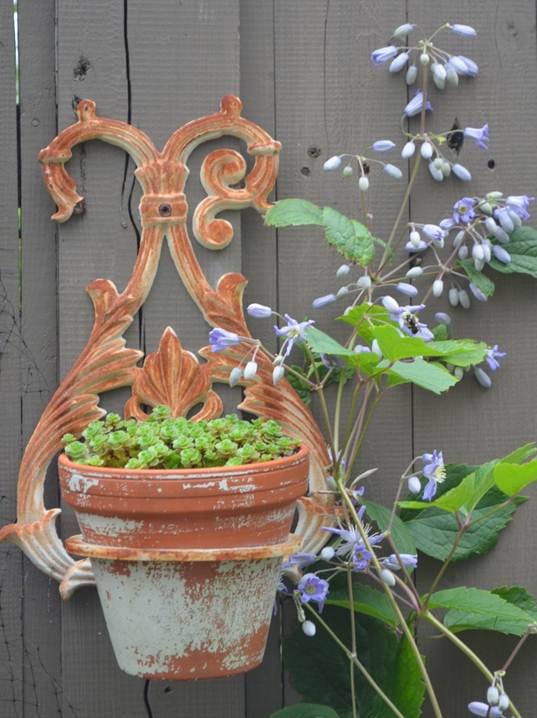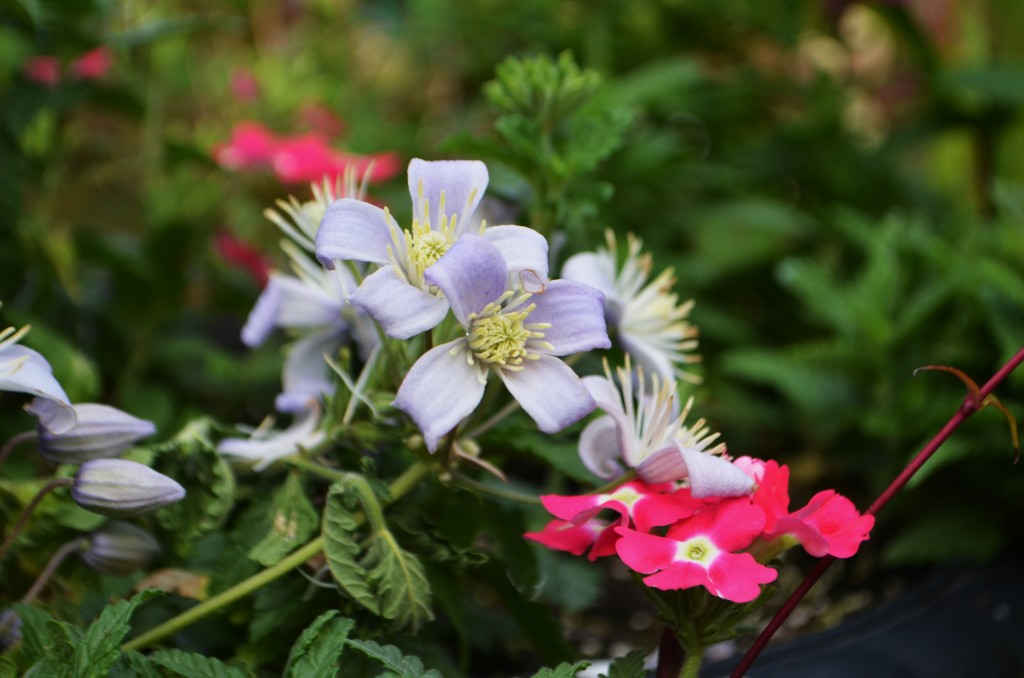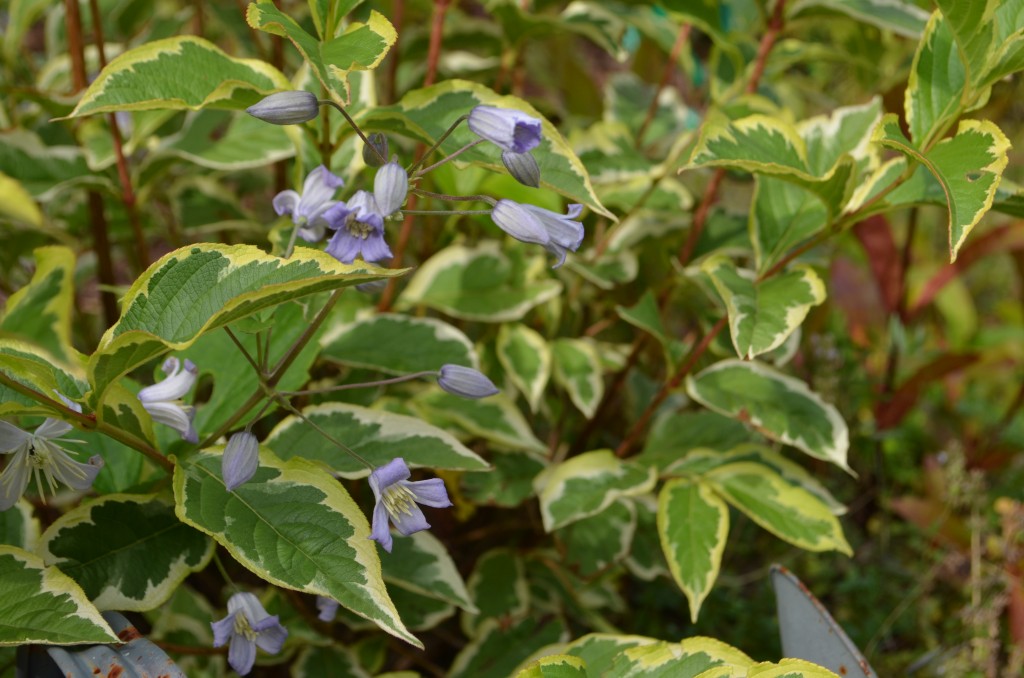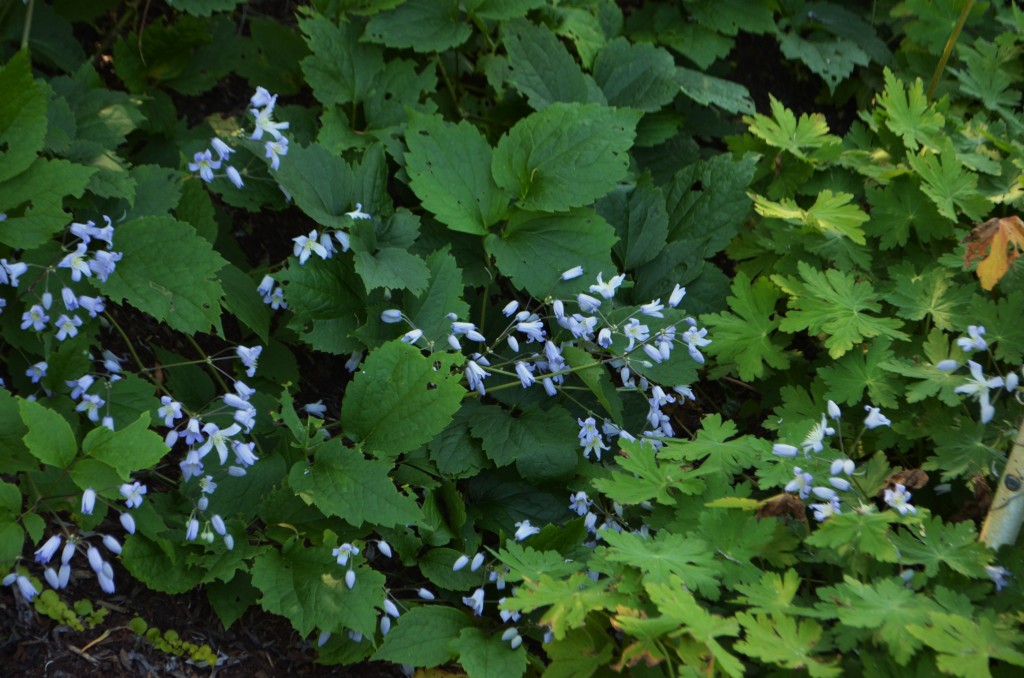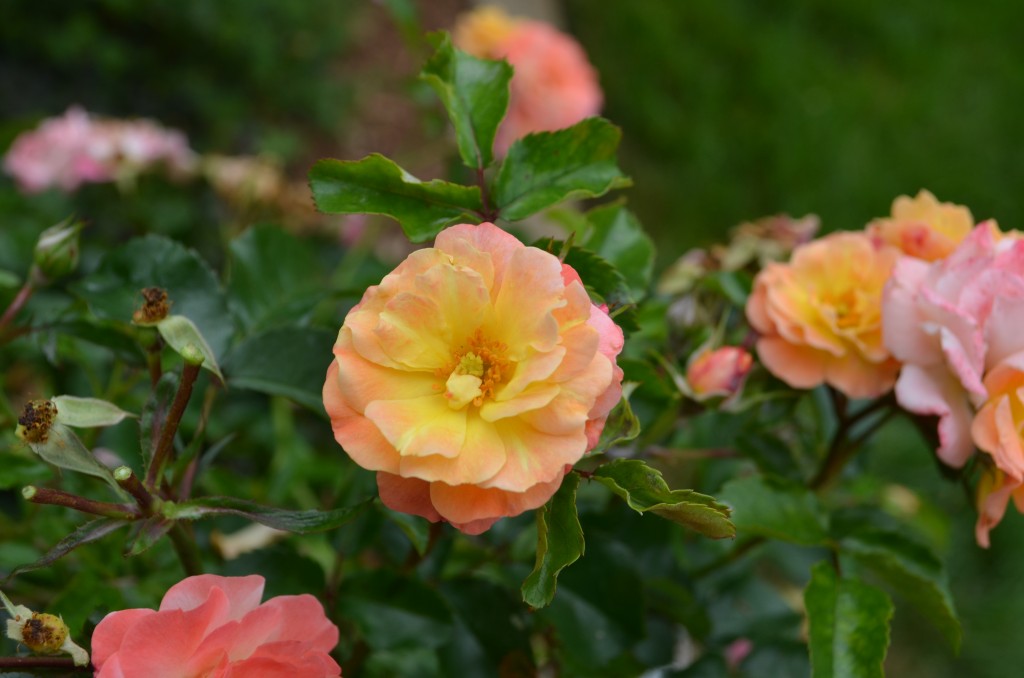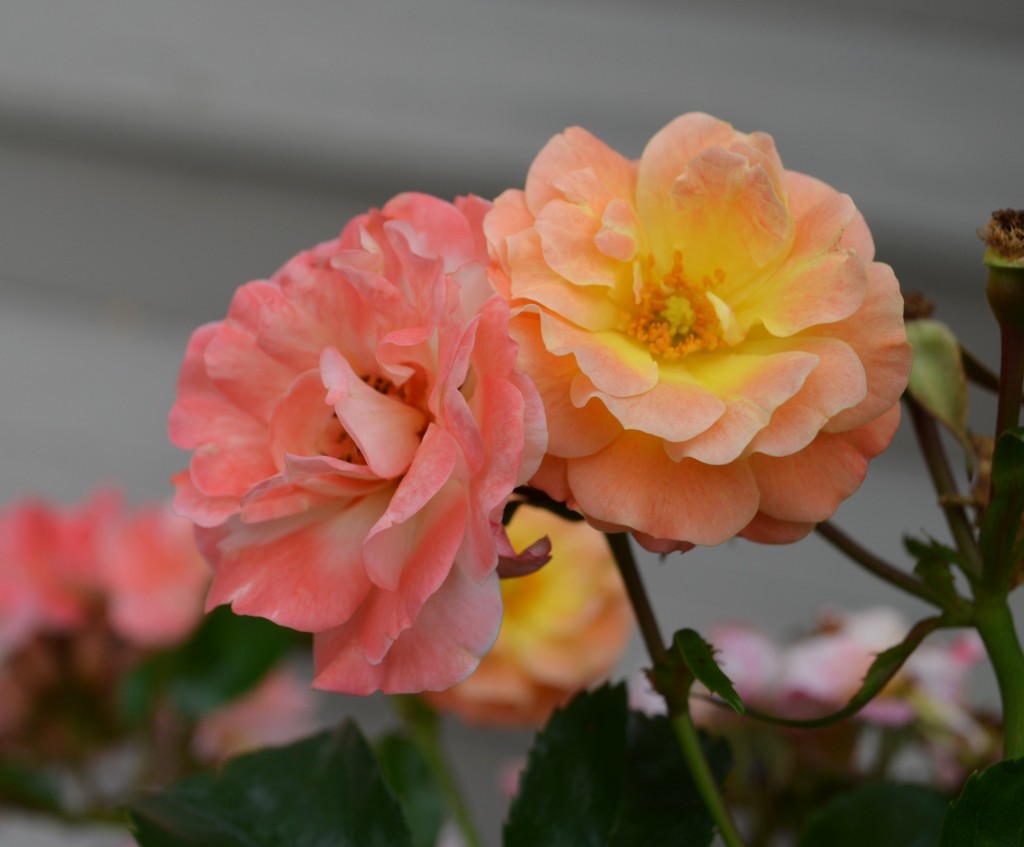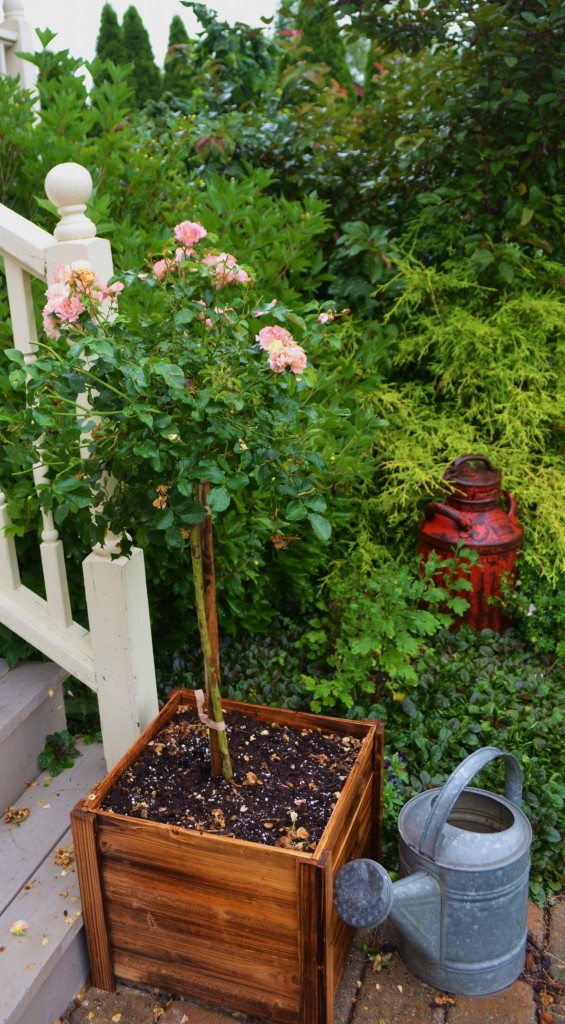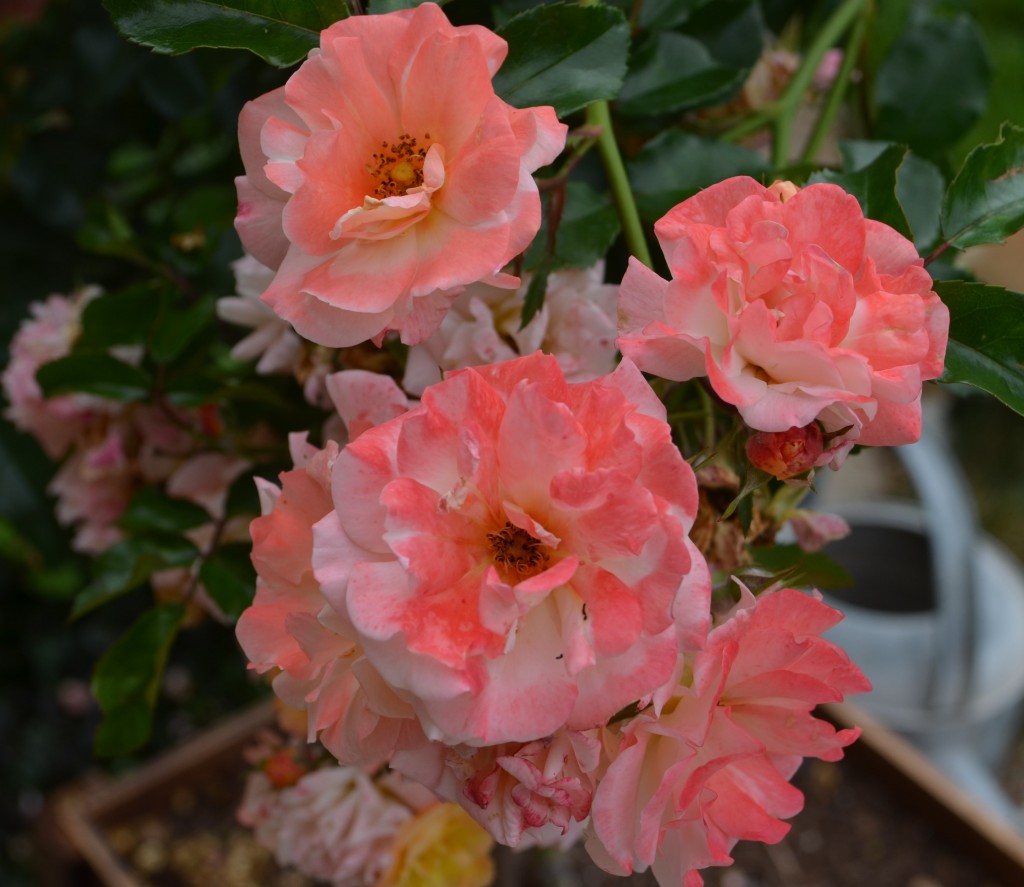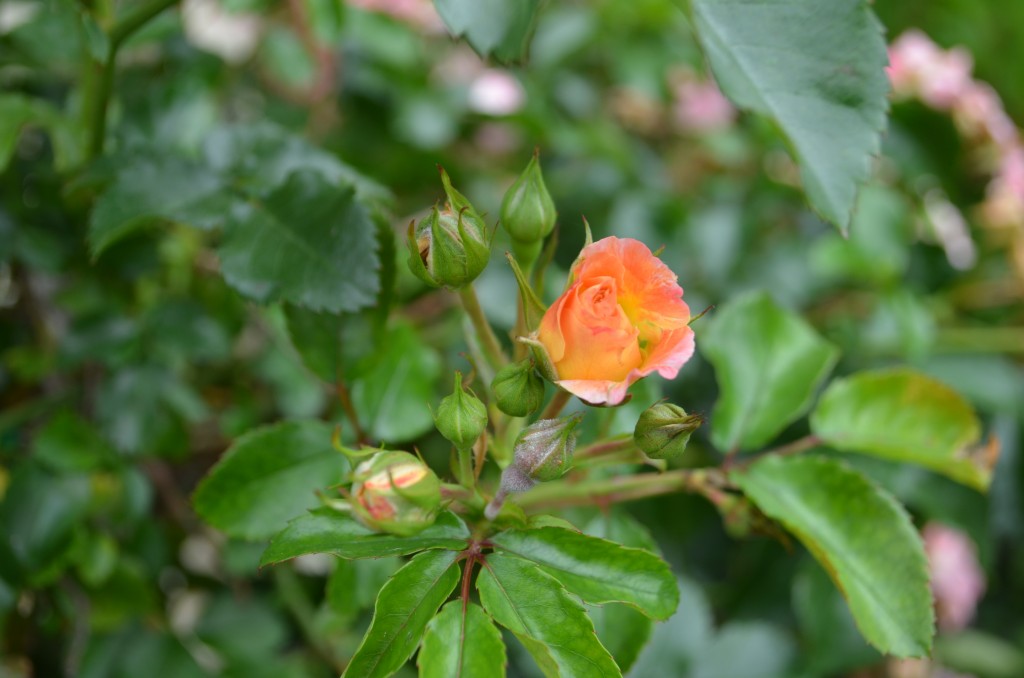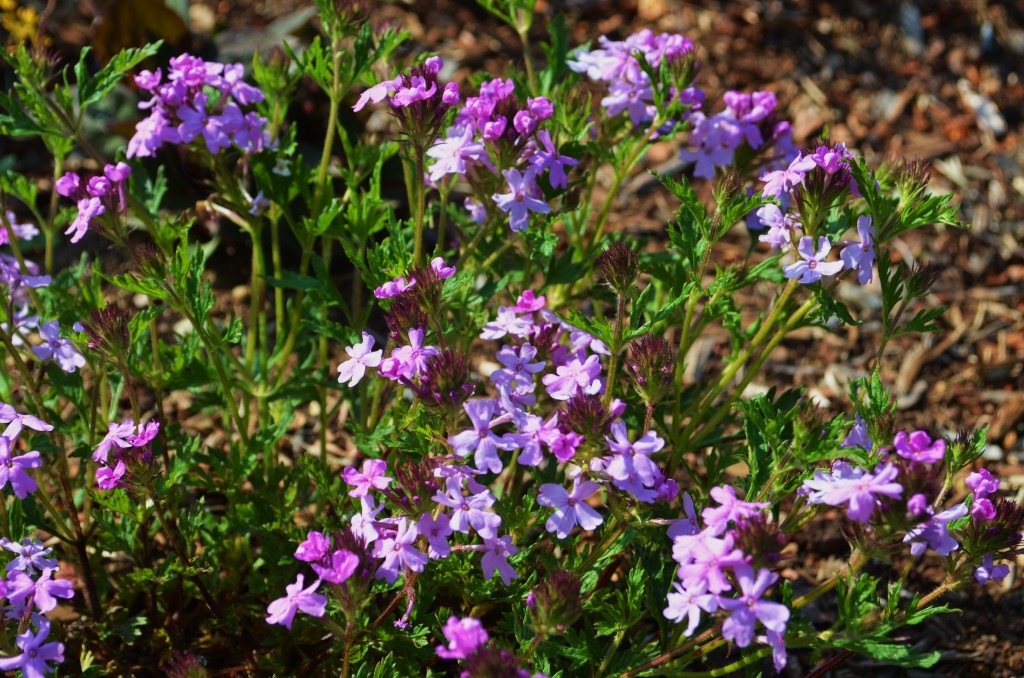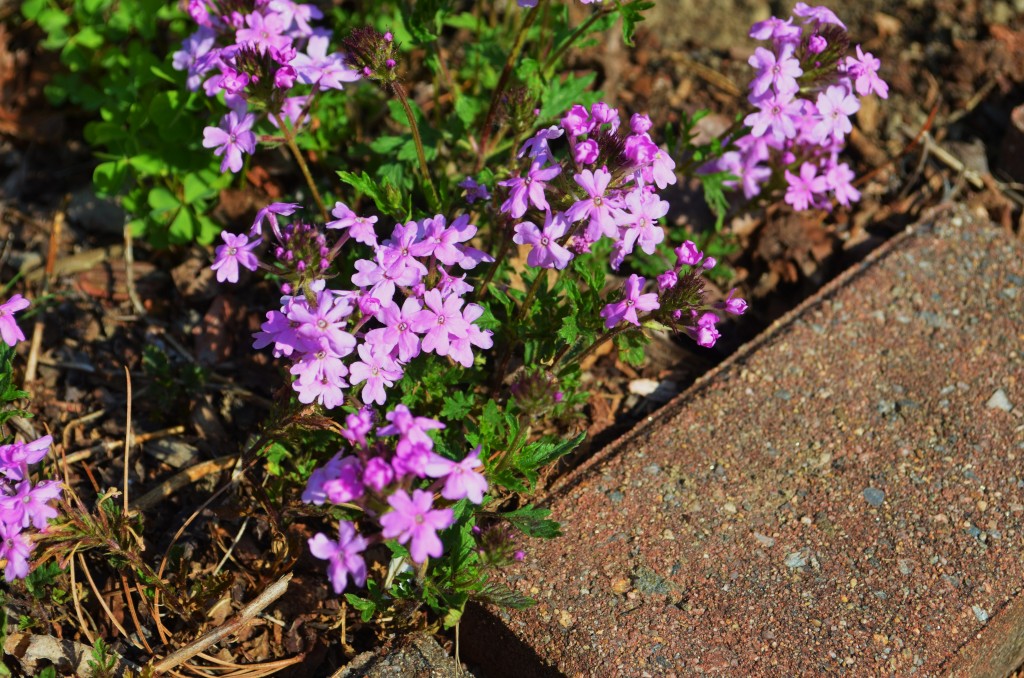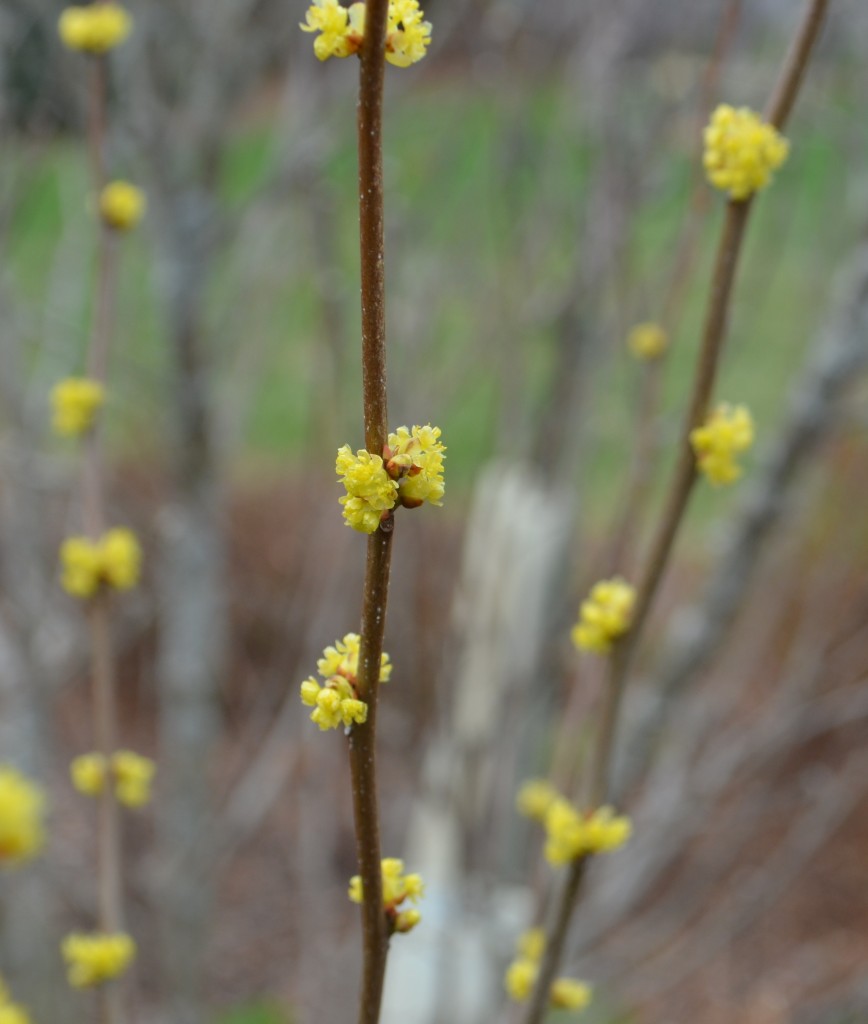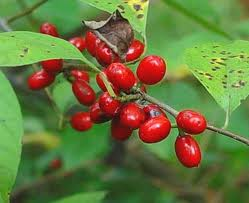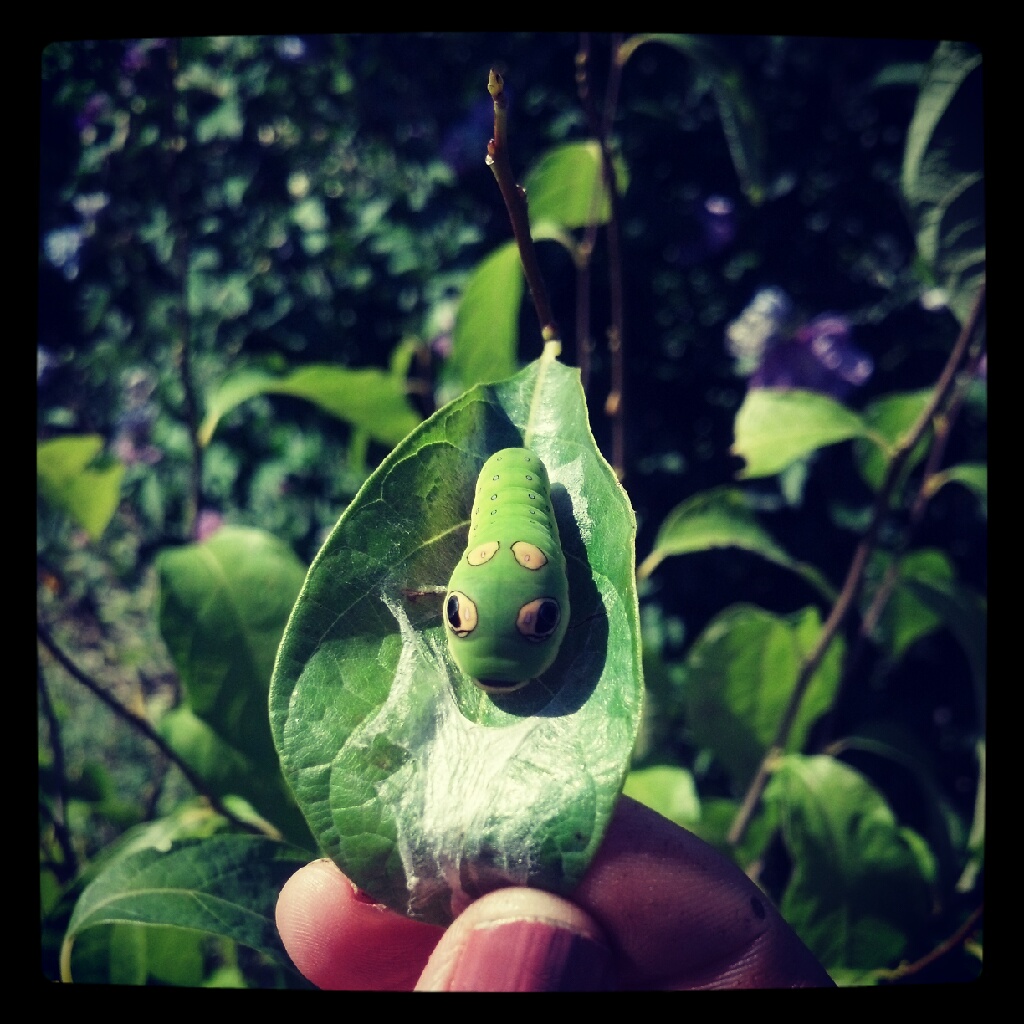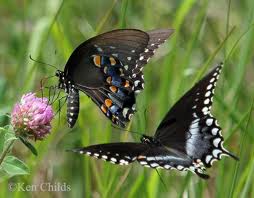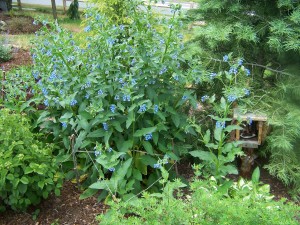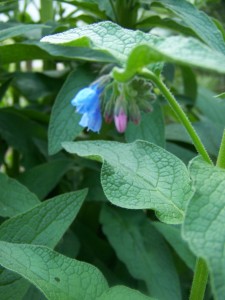Two very fun berry producing bushes are in the spotlight this time around in Plant Profile; snowberry symphoricarpos albus and beautyberry (callicarpa dichotoma ‘Early Amethyst ‘).
From early September and into November a lot of what makes my garden interesting revolves around the seed distribution mechanisms of many plants; the fruit of apples, pears, crabapples, cool looking seedpods of baptisia and woodland peonies, prickly seed heads of coneflowers, clematis and black eyed susans , rose hips and the seed bearing berries of hollies, viburnums, dogwoods and the two shrubs featured today , beautyberry and snowberry.
Snowberry, or symphoricarpos albus, is a suckering native shrub and although it can be easily overlooked in spring and summer is a can’t- be- missed highlight starting in late August. This shrub is absolutely humming with pollinators all through June, July, and August because it is smothered in tiny bell shaped pink flowers that are a great nectar source for bees and wasps. The berries form in late summer and early fall and will adorn the bush well into the winter as they are favored by grouse and ignored by most other birds until the robins return and devour them in spring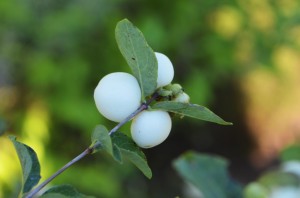 . This tough shrub can tolerate poor soils and drought, even thriving under mature oaks. It will grow to be about 3-5 feet tall with a similar spread, and given its suckering habit is perfect for embankments and other tough garden situations. I grow not only this species , but also symphoricarpos x doorenbosii ‘Amethyst’ which produces coral-pink berries. “Amethyst’ is a far less vigorous grower but the berry color is so lovely .
. This tough shrub can tolerate poor soils and drought, even thriving under mature oaks. It will grow to be about 3-5 feet tall with a similar spread, and given its suckering habit is perfect for embankments and other tough garden situations. I grow not only this species , but also symphoricarpos x doorenbosii ‘Amethyst’ which produces coral-pink berries. “Amethyst’ is a far less vigorous grower but the berry color is so lovely .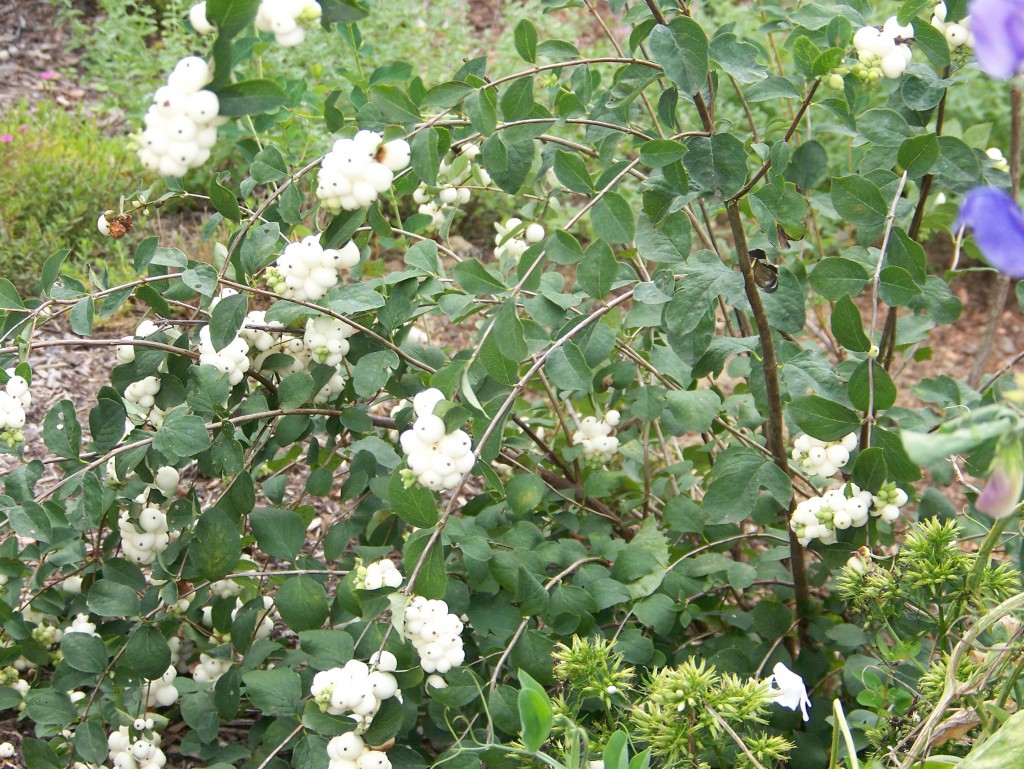
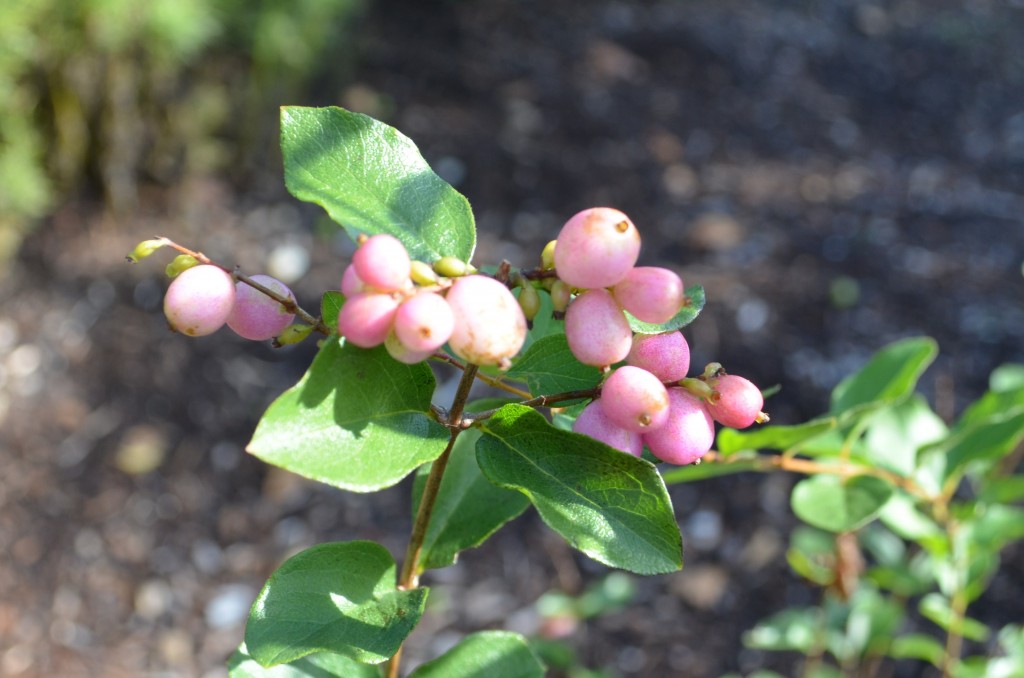 Both make superb additions to late season flower arrangements.
Both make superb additions to late season flower arrangements.
The second shrub ,beautyberry (callicarpa dichomata)is one you would be very familiar with if you have ever heard my presentation “Shrubs for Year Round Interest” as I tend to gush about it and may have even called it my favorite on a few occasions ( pssst ! don’t tell the other shrubs!) .
Just like snowberry, this shrub is covered along it’s branches with tiny flowers all summer long and frequented by many winged pollinators. Unlike snowberry, the beautyberry is a very well rounded and well mannered plant. I cut my beautyberry back to about a foot tall in the very early spring just like I would a butterfly bush ( buddleia) or blue mist shrub ( caryopteris) because many times here where it is so cold there will be winter die back and even if there is not it flowers better on new wood (and the shape is better too). VERY quickly the shrub will form a lovely mounded form topping out at 3-4 feet and proceed to flower profusely.
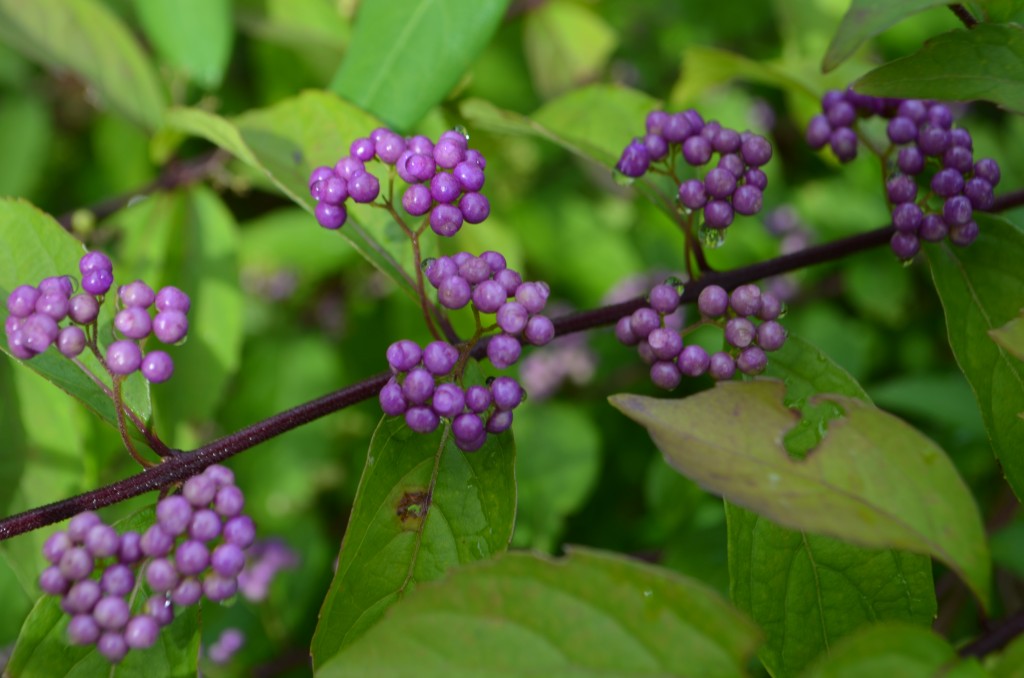 These flowers turn into , for lack of a better word, electric purple colored berry clusters that generally remain on the bush right through leaf drop and through the first few snowfalls. There is NOTHING in the gardening world as colorful and wonderful beautyberries in the snow.
These flowers turn into , for lack of a better word, electric purple colored berry clusters that generally remain on the bush right through leaf drop and through the first few snowfalls. There is NOTHING in the gardening world as colorful and wonderful beautyberries in the snow.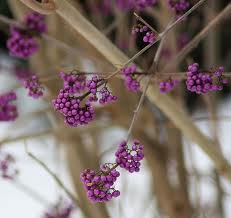
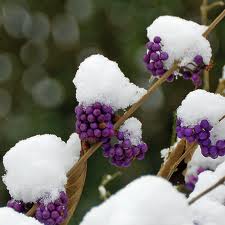 ( snow images from google, I can’t seem to find the folder mine are in ) A few freeze thaw cycles will take away the bitterness of the berries and then the birds will gobble them up, but we can count ourselves lucky to have enjoyed them for the months they were there.
( snow images from google, I can’t seem to find the folder mine are in ) A few freeze thaw cycles will take away the bitterness of the berries and then the birds will gobble them up, but we can count ourselves lucky to have enjoyed them for the months they were there.
This shrub is also a pretty tough customer, being able to grow in sun to part shade and fairly tolerant of a myriad of soil conditions. It is said you will have a larger crop of berries if you plant more than one beautyberry ( and boy oh boy would a hedge of them be divine) but I grow only one and have had stellar berry production every year. It can also be clipped for use in arrangements where it will be greeted with ooohs and ahhhhs and other excited utterances, because it is that cool.
There are many available varieties of callicarpa but I chose ‘Early Amethyst’ because some of the others can get quite large and frankly a little rangy looking and also because ,as the name implies, it berries much earlier than its’ cousins. ‘Profusion’ ( callicarpa bodinieri var.giraldii )is another good beautyberry if you have room for a larger shrub .
Fall is a great time for planting shrubs , and many nurseries have great sales now , so look for these two great garden additions and get planting!
